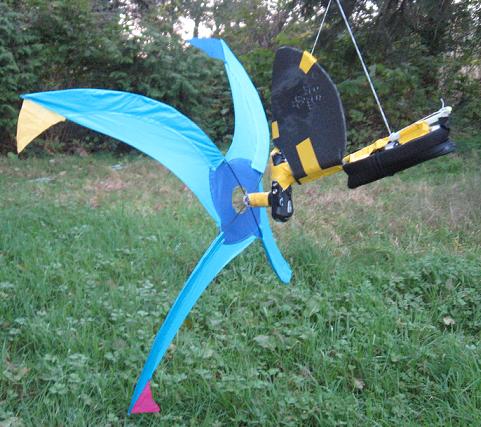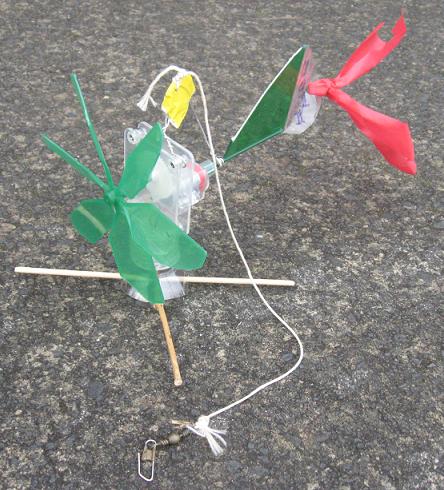|
FEGs Flying Electric Generators
|
"Artificial Moon" Soft-Rotor Phone-Charger AWECS Click image for
flight video:
Click image for
flight video: The quest for the simplest, cheapest, lightest Airborne Wind Energy (AWE) turbine rotor lead to the Premier kite company's Hypno-Twister spin-tail. Two standard fiberglass rods are crossed to support four decent membrane skin scimitar blades with helical pitch. This excellent pattern can be further refined and will scale-up greatly for potent dirt-cheap turbines. To make an AWECS with this type of soft-rotor, a used Hypno-Twister was shorn of its long ribbons and mated to a hand cranked cellphone USB charger with auxiliary white LED flashlight and AM/FM radio. The first test flights carry the same "lucky" cellphone used in many KiteLab AWE experiments, so in effect, two radios were lofted, along with the other functions, under a 40 sq ft sled kite. The soft-rotor-driven generator cranked well in just 8 mph of wind, and the LEDs shone so brightly that the camera CCD chip saturated along whole rows of pixels. The peculiar wonder of this spotlight in the sky is that such a light can shine "as long as the wind shall blow", as a sort of Artificial Moon. |
10USD NAV Light AWECS |
